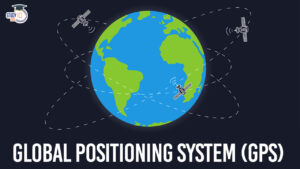Table of Contents
In the age of information and technology, one term has emerged as a driving force behind innovation and transformation across diverse sectors – Artificial Intelligence (AI). AI, often referred to as the cornerstone of the Fourth Industrial Revolution, is reshaping the landscape of industries, governance, and society as a whole. As aspirants for the prestigious UPSC exams, it is essential to comprehend the profound impact of AI on our world and its implications for the future.
What is Artificial Intelligence (AI)?
Artificial Intelligence (AI) refers to the development of computer systems capable of performing tasks that typically require human intelligence. Examples of AI include:
- Natural Language Processing (NLP): AI-powered chatbots like Siri and Google Assistant understand and respond to human speech.
- Machine Learning Algorithms: Netflix’s recommendation system uses AI to suggest personalized content based on user preferences.
- Computer Vision: AI can analyze images and videos, enabling self-driving cars to recognize traffic signs and faces in photos.
- Medical Diagnosis: AI assists doctors in diagnosing diseases by analyzing medical images and patient data.
- Game Playing: AI systems like Deep Blue and AlphaGo have beaten human champions in chess and Go.
AI continues to advance, impacting diverse fields from healthcare and finance to entertainment and autonomous vehicles.
Father of Artificial Intelligence (AI)
John McCarthy, an American computer scientist, is often regarded as one of the founding figures of Artificial Intelligence (AI). He is famously credited with coining the term “artificial intelligence” and played a significant role in establishing the field. Alongside other luminaries like Alan Turing, Marvin Minsky, Allen Newell, and Herbert A. Simon, McCarthy contributed to the foundational concepts and early developments that paved the way for the field of AI. His work and vision have left an indelible mark on the world of computer science, making him a pivotal figure in the history of AI.
Artificial intelligence and machine learning
| Aspect | Artificial Intelligence (AI) | Machine Learning (ML) |
| Scope | Broad field encompassing AI, ML, robotics, and more | Subset of AI focused on training models to learn from data |
| Goal | To create systems that can perform tasks requiring human intelligence | To teach machines to learn patterns and make predictions or decisions |
| Learning | Can include supervised, unsupervised, and reinforcement learning | Primarily focused on machine learning techniques |
| Human Intervention | May require significant human programming and rule-based systems | Requires less manual intervention for model training |
| Decision Making | Can exhibit reasoning and decision-making abilities | Primarily focused on pattern recognition and prediction |
| Examples | Virtual assistants, autonomous vehicles, problem-solving AI | Regression, clustering, and classification algorithms |
| Complexity | Can range from simple rule-based systems to complex deep learning networks | Complexity varies depending on the machine learning algorithm |
| Adaptability | Can adapt to a broader range of tasks and contexts | Tailored to specific tasks based on the training data |
| Training Data | May require extensive and diverse datasets | Requires labeled or unlabeled data for model training |
| Human-Like Intelligence | Aims to replicate human-like intelligence | Does not aim to replicate human intelligence but focuses on task-specific learning |
| Use Cases | Wide-ranging applications in healthcare, finance, robotics, and more | Used in predictive analytics, recommendation systems, and data-driven decision-making |
Open Artificial Intelligence
“Open Artificial Intelligence,” often known as “OpenAI,” is a prominent organization dedicated to advancing artificial intelligence for the benefit of humanity. OpenAI’s core mission is to promote the development of AI technologies that are transparent, safe, and accessible to all. They are known for creating state-of-the-art AI models like GPT-3, which have wide-ranging applications in natural language understanding, text generation, and more. OpenAI emphasizes collaboration, sharing research, and promoting responsible AI practices. By fostering openness and cooperation in the AI community, OpenAI aims to drive innovation while ensuring ethical, secure, and equitable AI development and deployment for the betterment of society.
Generative Artificial Intelligence
Generative Artificial Intelligence, often referred to as Generative AI, is a subset of artificial intelligence focused on creating systems capable of generating content autonomously. These systems use techniques such as neural networks, deep learning, and reinforcement learning to produce text, images, music, or other data types. Generative AI has led to significant advancements in creative fields, content generation, and automation. Examples include text generation models like GPT-3, which can compose articles, answer questions, and even generate poetry, and deep generative models like GANs (Generative Adversarial Networks), which produce realistic images and videos. Generative AI is revolutionizing content creation and creative industries across the board.
Types of Artificial Intelligence (AI)
Narrow or Weak AI (ANI)
Also known as narrow AI or weak AI, this type of AI is designed for a specific task or a limited range of tasks. ANI systems excel in their designated area but lack general intelligence. Examples include virtual personal assistants (like Siri or Alexa), recommendation algorithms, and chatbots.
General or Strong AI (AGI)
General AI, also called strong AI, aims to replicate human-level intelligence, with the ability to understand and perform a wide range of tasks, adapt to new situations, and learn new skills. Achieving AGI is an ongoing research challenge and has not yet been realized.
Artificial Superintelligence (ASI)
This hypothetical form of AI surpasses human intelligence in every aspect, including creativity, problem-solving, and emotional intelligence. ASI represents an advanced stage of AI development and remains a topic of debate and speculation.
Machine Learning (ML)
Machine learning is a subset of AI that focuses on developing algorithms and models that can learn from data. It includes supervised learning, unsupervised learning, and reinforcement learning.
Deep Learning
Deep learning is a subfield of machine learning that uses neural networks with multiple layers (deep neural networks) to analyze and process data. It has been particularly successful in tasks like image and speech recognition.
Natural Language Processing (NLP)
NLP is a branch of AI that deals with the interaction between computers and human language. It enables machines to understand, interpret, and generate human language, making it essential for chatbots, language translation, and sentiment analysis.
Computer Vision
Computer vision AI systems can analyze and interpret visual information from the world, such as images and videos. They are used in applications like facial recognition, object detection, and autonomous vehicles.
Reinforcement Learning
Reinforcement learning is a type of machine learning where an AI agent learns to make decisions by interacting with an environment and receiving rewards or penalties based on its actions. It is commonly used in robotics and game playing.
Expert Systems
Expert systems are AI programs that emulate the decision-making abilities of a human expert in a particular domain. They use knowledge bases and inference engines to provide solutions and recommendations.
Autonomous AI
These AI systems operate independently and make decisions without human intervention. Autonomous vehicles, drones, and some industrial robots are examples of autonomous AI.
Applications of artificial intelligence
Artificial Intelligence (AI) has witnessed a proliferation of applications across numerous industries, leveraging its data-driven capabilities to enhance efficiency, productivity, and decision-making. Here are some key domains where AI is making a significant impact:
Healthcare
AI is transforming healthcare by aiding in Medical Diagnosis, using machine learning to analyze patient data, and medical images for more accurate diagnoses. It also plays a crucial role in Drug Discovery, by sifting through vast datasets to identify potential drug candidates. Furthermore, AI enables Personalized Treatment Plans, tailoring healthcare interventions based on an individual’s genetic profile and medical history.
Finance
The financial industry benefits from AI in multiple ways. Algorithmic Trading employs AI algorithms to analyze market data and execute high-frequency trades, while AI-driven Fraud Detection systems identify anomalous transactions and protect against financial scams. In addition, AI assists in Credit Scoring, assessing an individual’s creditworthiness by analyzing their financial history and behavior.
Transportation
AI powers the development of Self-Driving Cars, using sensors and machine learning algorithms to navigate autonomously, promising safer and more efficient transportation. AI is also deployed in Drones, which can be used for tasks like surveillance, delivery, and inspection.
Retail
In the retail sector, AI-driven Recommendation Systems enhance customer experiences by suggesting products based on previous interactions. It optimizes Inventory Management, helping retailers maintain optimal stock levels and reduce waste. Furthermore, AI Chatbots offer automated customer support and handle inquiries efficiently.
Natural Language Processing (NLP)
NLP is a critical aspect of AI, facilitating Language Translation by enabling machines to interpret and translate text and speech between languages. AI also performs Sentiment Analysis, gauging public opinion and sentiment through social media and news data. Additionally, NLP powers Virtual Assistants like Siri and Alexa, making it easier to perform tasks through voice commands.
Manufacturing
AI plays a vital role in manufacturing through Predictive Maintenance, where it predicts equipment failures by analyzing sensor data, reducing downtime and maintenance costs. AI also ensures product quality through Quality Control, employing image analysis to identify and rectify defects in real-time.
Entertainment
In the entertainment industry, AI enhances gaming experiences with intelligent non-player characters and realistic graphics. It also contributes to Content Generation, creating music, art, and even scripts for movies and TV shows.
Agriculture
AI revolutionizes agriculture with Precision Farming, utilizing data from sensors and satellites to optimize crop planting, irrigation, and resource allocation for higher yields. Additionally, AI helps in Pest and Disease Management by identifying and mitigating agricultural pests and diseases more effectively.
Cybersecurity
AI aids in Threat Detection, identifying and responding to cybersecurity threats in real-time by analyzing network traffic and patterns. It is also instrumental in Anomaly Detection, detecting unusual behaviors or deviations from established norms that may indicate security breaches.
Energy
AI optimizes the energy sector with improved Grid Management, ensuring efficient distribution and stability in smart grids. Furthermore, AI predicts Energy Consumption Patterns, aiding in energy production and resource allocation for more sustainable energy practices.
Future of Artificial Intelligence (AI)
The future of Artificial Intelligence (AI) holds immense promise and presents both opportunities and challenges. As AI technologies continue to advance, we can expect greater integration into various aspects of our lives. This includes more sophisticated virtual assistants, improved healthcare diagnostics, autonomous vehicles becoming mainstream, and AI-driven solutions in areas like climate modeling and drug discovery. Ethical considerations and responsible AI development will gain even more importance, with a focus on fairness, transparency, and data privacy. Striking a balance between harnessing AI’s potential for innovation while addressing its ethical and societal implications will be a key aspect of shaping the AI landscape in the future.
Artificial Intelligence (AI) in Indian Context
In the context of India, the application of Artificial Intelligence (AI) holds immense potential to address specific challenges and bolster various developmental initiatives. AI can significantly complement the Digital India mission by enabling advanced data analysis, enhancing the targeted delivery of services, and strengthening security infrastructure, especially at borders.
Moreover, AI-powered weather forecasting models can aid in proactive disaster management, reducing the impact of calamities such as floods and droughts. The integration of AI in governance, healthcare, and remote areas can bridge critical gaps in service delivery.
Despite these opportunities, India faces challenges related to private sector dominance in AI, the absence of effective public-private funding models, an outdated education system, and the ongoing debate about resource allocation between poverty alleviation and technological advancement. To fully leverage AI’s potential, India must address these challenges and foster an enabling environment for AI research and development.
Advantages of Artificial Intelligence (AI)
- Enhanced Accuracy: AI algorithms can analyze vast amounts of data with precision, reducing errors and improving accuracy in various applications, such as diagnostics, predictions, and decision-making.
- Improved Decision-Making: AI provides data-driven insights and analysis, assisting in informed decision-making by identifying patterns, trends, and potential risks that may not be easily identifiable to humans.0
- Innovation and Discovery: AI fosters innovation by enabling new discoveries, uncovering hidden insights, and pushing the boundaries of what is possible in various fields, including healthcare, science, and technology.
- Increased Productivity: AI tools and systems can augment human capabilities, leading to increased productivity and output across various industries and sectors.
- Continuous Learning and Adaptability: AI systems can learn from new data and experiences, continually improving performance, adapting to changes, and staying up-to-date with evolving trends and patterns.
- Exploration and Space Research: AI plays a crucial role in space exploration, enabling autonomous spacecraft, robotic exploration, and data analysis in remote and hazardous environments.
Disadvantages of Artificial Intelligence (AI)
- Job Displacement: AI automation may lead to the displacement of certain jobs as machines and algorithms can perform tasks that were previously done by humans. This can result in unemployment and require re-skilling or retraining of the workforce.
- Ethical Concerns: AI raises ethical concerns such as the potential for bias in algorithms, invasion of privacy, and the ethical implications of autonomous decision-making systems.
- Reliance on Data Availability and Quality: AI systems heavily rely on data availability and quality. Biased or incomplete data can lead to inaccurate results or reinforce existing biases in decision-making.
- Security Risks: AI systems can be vulnerable to cyber attacks and exploitation. Malicious actors can manipulate AI algorithms or use AI-powered tools for nefarious purposes, posing security risks.
- Overreliance: Blindly relying on AI without proper human oversight or critical evaluation can lead to errors or incorrect decisions, particularly if the AI system encounters unfamiliar or unexpected situations.
- Lack of Transparency: Some AI models, such as deep learning neural networks, can be difficult to interpret, making it challenging to understand the reasoning behind their decisions or predictions (referred to as the “black box” problem).
- Initial Investment and Maintenance Costs: Implementing AI systems often requires significant upfront investment in infrastructure, data collection, and model development. Additionally, maintaining and updating AI systems can be costly.
Artificial Intelligence (AI) UPSC
Artificial Intelligence (AI) stands as a transformative force, reshaping industries, governance, and our daily lives. It encompasses diverse applications, from healthcare and finance to transportation and entertainment, promising efficiency and innovation. India, in particular, can harness AI’s potential to bolster developmental initiatives, such as Digital India and disaster management. However, challenges persist, including private sector dominance, inadequate funding models, and an outdated education system. The ethical dimensions of AI also demand vigilant consideration. Nonetheless, as AI continues to evolve, responsible adoption and ethical oversight can unlock a future where AI complements human endeavors, offering both solutions and opportunities across the spectrum of human endeavors.
Featured Image Credit: ClaudeAI.uk (https://claudeai.uk/)


 Nuclear Waste, Types, Management and Ind...
Nuclear Waste, Types, Management and Ind...
 Geosynchronous Satellite Launch Vehicle ...
Geosynchronous Satellite Launch Vehicle ...
 Global Positioning System (GPS), Functio...
Global Positioning System (GPS), Functio...





















